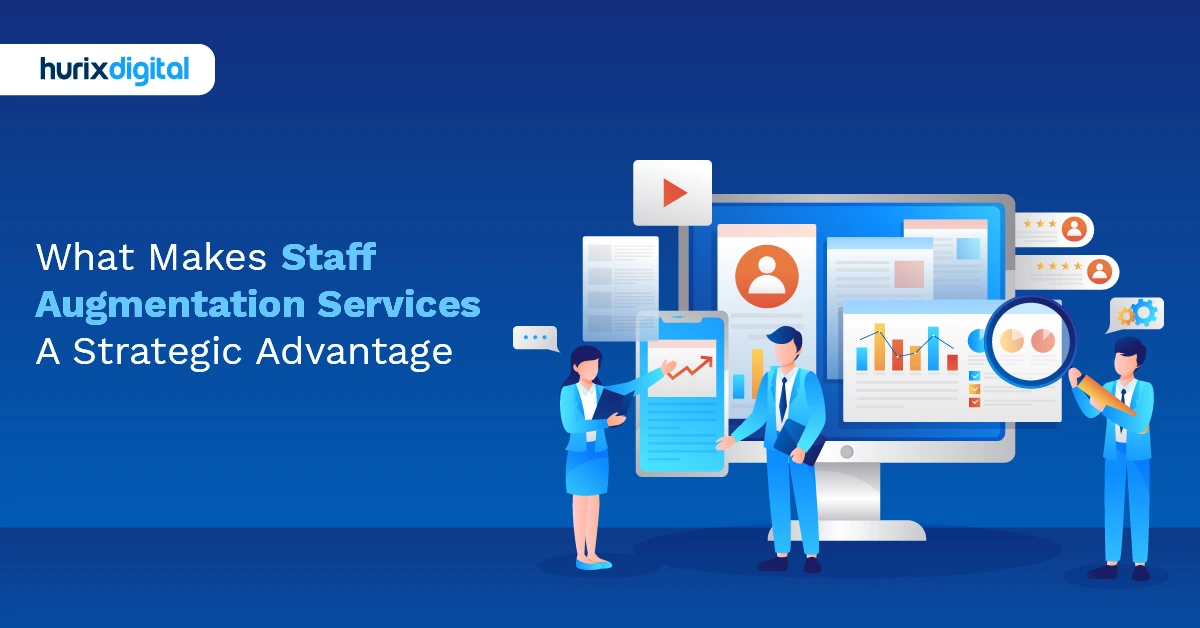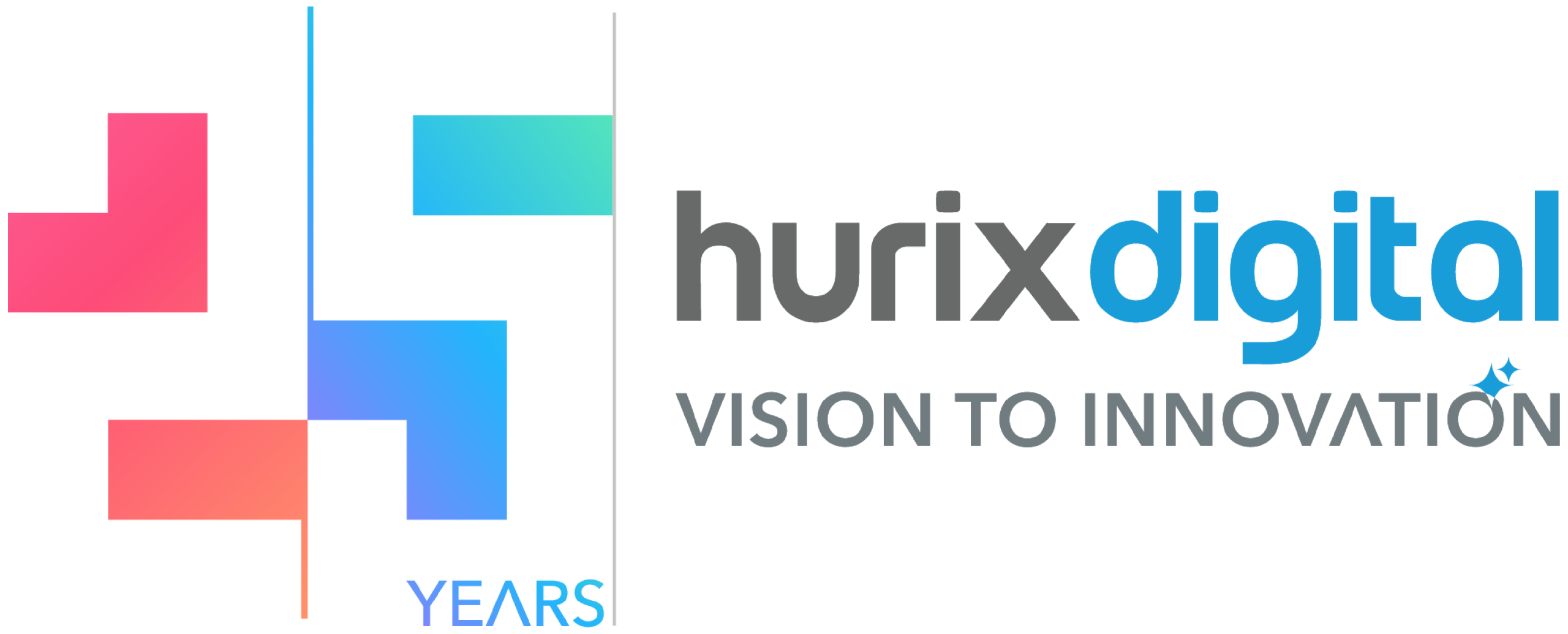
What Makes Staff Augmentation Services A Strategic Advantage
The conversation around staff augmentation usually starts the same way: a project deadline looms, and the internal team is already stretched thin. Someone suggests bringing in external talent, and suddenly, everyone has opinions. The tech lead worries about code quality, HR frets about legal complications, and finance questions the cost structure. You wonder whether competitors have discovered some secret sauce or if they’re just better at managing mixed teams of internal and external talent.
As a result, staff augmentation poses a number of challenges. For decades, companies built fortress-like organizations where employees were inside and everyone else was outside. Clear boundaries. Simple governance. Predictable dysfunction. Now those boundaries blur. Your next critical project might be delivered by a team where half the members work for other companies, possibly from different continents, maybe even for your competitors on alternate days. The old playbooks about team building, knowledge management, and competitive advantage need a serious relook.
Table of Contents:
- When is Staff Augmentation Truly the Right Strategic Choice?
- How to Integrate Augmented Staff Seamlessly Into Existing Teams?
- What is the True ROI of Staff Augmentation for My Business?
- How to Select the Best Staff Augmentation Vendor Effectively?
- How Do We Maintain Project Control With External Augmented Teams?
- What are the IP and Data Security Implications of Augmentation?
- How Does Staff Augmentation Ensure Long-Term Scalability and Flexibility?
- How to Ensure Cultural Fit With Augmented Staff for Productivity?
- What is the Optimal Exit Strategy for Augmented Staff Engagements?
- How Will Staff Augmentation Evolve With Future Tech Trends?
- A Final Word
When is Staff Augmentation Truly the Right Strategic Choice?
Everyone thinks they need staff augmentation when they’re drowning in work. That’s exactly the wrong time to make this decision. Desperation leads to bad contracts and poor integration. Moreover, augmented staff become expensive band-aids on structural problems. The right time to consider augmentation? When you’re thinking strategically, not scrambling tactically.
Timing matters enormously. Augmentation works best for defined periods with clear endpoints. “We need extra developers forever” isn’t an augmentation strategy—it’s an admission that your hiring or retention strategy has failed. “We need specialized expertise for this 18-month transformation” makes sense. The distinction matters because augmented staff with no end date become shadow employees with all the costs but none of the benefits of actual employment.
The competitive angle often gets overlooked. A financial services firm could have built its mobile banking platform with internal teams over two years. Instead, they augmented with specialists who’d built similar systems and compressed delivery to eight months. They paid more per month but captured market share worth far more than the premium.
Cost remains a major factor in augmentation, even though geographic arbitrage isn’t the primary reason. The real value comes from accessing talent pools you couldn’t reach otherwise. That machine learning expert in Estonia. The UX designer in Brazil who understands your target market. The architect in India who has solved your exact technical challenge three times before. When you stop thinking about augmentation as “cheap labor” and start thinking about it as “global expertise,” the strategic value becomes clear.
Here’s when augmentation is wrong: when you’re trying to outsource your core competency, when you need deep institutional knowledge, or when you’re hoping external talent will somehow fix broken internal processes. Augmented staff can accelerate good organizations. They can’t fix bad ones.
How to Integrate Augmented Staff Seamlessly Into Existing Teams?
Integration failure kills more augmentation initiatives than cost overruns or quality issues combined. Companies bring in external talent, throw them into existing teams, and act surprised when productivity drops and resentment builds.
The resentment starts immediately if handled poorly. Internal employees see augmented staff as either threats to their jobs or burdens to carry. They hoard information, exclude externals from important discussions, and create subtle barriers that guarantee failure. Successful integration requires deliberate structure. Define clear roles before anyone joins:
- Who owns architecture decisions?
- Who reviews code?
- Who talks to stakeholders?
Ambiguity creates conflict. One of our healthcare clients created “integration maps” showing exactly how augmented and internal staff would interact. It felt bureaucratic initially, but it prevented countless territorial disputes later.
Communication patterns need explicit design. Augmented staff often work remotely, sometimes across time zones. The casual hallway conversations and coffee machine interactions that build trust don’t happen naturally. A smart organization has structured touchpoints such as daily standups, weekly deep dives, and monthly retrospectives to force interaction between team members. But they also create informal spaces: virtual coffee breaks, gaming sessions, and stupid icebreakers that everyone mocks but secretly appreciates. Human connection doesn’t happen automatically across organizational boundaries.
Tools and access reveal integration philosophy. If augmented staff need different credentials, use separate systems, or can’t access critical resources, you’re telling everyone they’re second-class citizens. Yes, security matters. But excessive restrictions signal distrust and guarantee diminished contribution.
The knowledge transfer challenge goes both ways. Internal teams need to share context and institutional knowledge, and augmented staff bring external expertise and fresh perspectives. But knowledge doesn’t flow automatically. It requires documentation, patience, and incentives for sharing.
What is the True ROI of Staff Augmentation for My Business?
Using external and internal costs to calculate staff augmentation ROI seems straightforward. This simplistic math misses 80% of the equation. It’s like evaluating a restaurant based solely on ingredient costs while ignoring preparation, ambiance, and whether anyone actually wants to eat there.
Direct cost comparisons often shock finance teams. Does that augmented developer cost $150 per hour? Your internal developer earning $120,000 annually costs about $75 per hour! Augmentation looks expensive until you factor in reality. That internal rate assumes full utilization, which never happens. Add recruiting costs, benefits, training, management overhead, and idle time between projects. Suddenly, the math shifts. Plus, you can stop paying augmented staff when the project ends. Try that with employees and see how it goes.
Risk mitigation rarely appears in ROI calculations but might be the biggest value. Augmented staff absorb project risks. If requirements change, you adjust team composition. If projects fail, you end contracts. Try achieving that flexibility with permanent employees. One startup CEO admitted: “Staff augmentation lets us take bigger risks because failure doesn’t mean layoffs.”
The portfolio effect multiplies ROI. Organizations that strategically use augmentation can tackle more projects simultaneously. Internal teams focus on core work, while augmented teams handle specialized initiatives.
How to Select the Best Staff Augmentation Vendor Effectively?
Vendor selection usually starts with RFPs that ask the wrong questions. Pages of requirements about certifications, years in business, and client lists. Meanwhile, nobody asks whether the vendor actually understands your problems or if their talent pipeline contains people you’d want on your team.
Cultural alignment matters more than geographic proximity or cost. A vendor might offer great rates and impressive resumes, but if their work style clashes with yours, you’ll spend more time managing friction than delivering value. Talent quality varies wildly between vendors and within vendors. The impressive architects and senior developers who wow you during vendor presentations? They might not be the people actually working on your project. Instead of interviewing salespeople, smart buyers demand to meet with the actual team members. Check their GitHub profiles. Review their previous work. Talk to their former clients.
The vendor’s business model affects your experience. Vendors may maintain a bench strength of employed experts who are ready to be deployed immediately. While some vendors may scramble to find contractors after winning deals. Some invest in continuous training. Others assume skills remain static. Understanding how vendors source, train, and retain talent helps predict whether they’ll deliver consistent quality or constantly shuffle personnel.
Flexibility and scalability separate good vendors from great ones. Projects evolve. Requirements change. Team needs fluctuate. Vendors locked into rigid contracts or unable to scale quickly become bottlenecks. Test flexibility during negotiations:
- How do they handle scope changes?
- Can they add specialists mid-project?
- What happens if you need to reduce team size?
The vendor pushing back on reasonable flexibility requests during sales discussions will be nightmare partners during project stress.
How Do We Maintain Project Control With External Augmented Teams?
Control paranoia kills augmentation benefits. Organizations bring in external talent for flexibility and expertise, then implement such rigid oversight that augmented staff can’t contribute effectively.
Governance structures need rethinking for augmented teams. Traditional hierarchies assume everyone works for the same organization with aligned incentives. Augmented teams have different employers, potentially conflicting priorities, and varying commitment levels. Smart organizations create project-based governance that transcends organizational boundaries. Clear decision rights, escalation paths, and accountability mechanisms that work regardless of employment status.
Output control beats activity monitoring. Some companies install keystroke loggers, screenshot capture, and time tracking for augmented staff. This surveillance theater creates resentment without ensuring quality. Better to define clear deliverables, quality standards, and deadlines, then let professionals work professionally. One of our tech clients switched from hour-based contracts to output-based agreements. Quality improved, relationships improved, and nobody cared whether augmented staff worked at 2 PM or 2 AM as long as deliverables met standards.
Communication rhythms determine actual control. Daily standups, weekly reviews, and sprint retrospectives create natural checkpoints without micromanagement. But communication needs to be bidirectional. Augmented staff should raise concerns, suggest improvements, and challenge assumptions. External team members only receive orders and report status, so you’re not maintaining control. You’re maintaining an illusion!
Technical integration provides subtle control. Code repositories, project management tools, and documentation systems create transparency without intrusion. Every commit is visible. Every decision is documented. This ambient accountability works better than explicit oversight because it’s about shared visibility rather than surveillance. When everyone sees everything, standards naturally rise.
What are the IP and Data Security Implications of Augmentation?
Intellectual property (IP) and security concerns keep legal teams awake when organizations use staff augmentation. And they should. Every augmented team member represents a potential leak point for trade secrets, customer data, and competitive advantages. But paranoid security that prevents work is as dangerous as lax security that enables breaches.
The IP ownership maze gets complex quickly. Augmented staff create code, designs, and solutions using your resources, their expertise, and sometimes their employer’s tools and frameworks. Who owns what? Standard contracts claiming “all work product” sound clean until augmented staff can’t deliver because they’d violate their employer’s IP rights. Smart contracts explicitly separate background IP (what they bring) from foreground IP (what they create for you).
Code contamination represents a hidden risk. That brilliant augmented developer might unconsciously reuse patterns, algorithms, or actual code from previous clients. Now you’re potentially violating someone else’s IP without knowing it. Data security gets exponentially harder with distributed teams. Every augmented team member’s laptop becomes a potential breach point. Their home networks, coffee shop WiFi, and personal devices all represent vulnerabilities. But demanding enterprise-level security from individual contractors often proves impossible. It is more important to implement a zero-trust network, encrypt communications, and limit data access than to ensure perfect endpoint security.
Knowledge leakage happens through movement. Today’s augmented team member might work for your competitor tomorrow. They can’t unsee your architecture, forget your strategies, or unlearn your approaches. Non-disclosure agreements (NDAs) provide legal recourse but don’t prevent knowledge transfer. The only real protection involves architectural decisions about what augmented staff can access. Core algorithms, strategic plans, and customer lists stay internal. Implementation details, commodity features, and non-differentiating work go to augmented teams.
How Does Staff Augmentation Ensure Long-Term Scalability and Flexibility?
Staff augmentation can be dialed up when times are busy, and when times are slow, it can be dialed down. Reality proves messier. True scalability requires infrastructure, relationships, and strategies that most organizations don’t develop until they desperately need them. By then, it’s usually too late.
Scaling up hits practical walls quickly. You need ten more developers next month? Good luck. Quality talent doesn’t sit idle waiting for your call. Even vendors with “bench strength” have limits. A traditional scaling approach often makes things worse by throwing bodies at problems. Ten mediocre developers don’t equal three excellent ones. They equal chaos, rework, and delayed deliveries.
The relationship portfolio approach works better than single-vendor dependence. Multiple vendor relationships provide options, competition, and risk mitigation. When one vendor can’t scale, others might. When quality drops, alternatives exist. The problem with managing multiple vendors is that different contracts, processes, and relationships must be maintained. Smart organizations standardize interfaces while maintaining vendor diversity. Same onboarding process, tools, and governance, but different talent sources.
Flexibility means more than team size changes. Technology stacks evolve, project requirements shift, and market demands change. Can your augmentation strategy adapt? Organizations locked into long-term contracts with narrow skill definitions discover that flexibility was an illusion. It’s better to maintain framework agreements that allow skill changes, not just headcount changes. Today’s Java developers might need to become Python developers tomorrow.
The institutional knowledge problem compounds with scale. Every departing augmented team member takes knowledge with them. Scale up and down repeatedly, and you’re constantly losing context, rebuilding understanding, and explaining decisions. Documentation helps, but it isn’t sufficient. Smart organizations maintain a stable core of long-term augmented staff who provide continuity while allowing peripheral team members to fluctuate.
How to Ensure Cultural Fit With Augmented Staff for Productivity?
Cultural fit sounds like fluffy HR speak until misalignment destroys productivity. The augmented team that technically delivers but never integrates costs more than their invoices suggest. They create friction, require constant management, and drain energy from internal teams. Yet most organizations treat culture as an afterthought, hoping professional adults will somehow figure it out.
Work style differences create immediate friction. Your teams embrace agile development with rapid iterations and constant communication. The augmented team prefers a waterfall with detailed specifications and formal sign-offs. Neither is wrong, but the mismatch guarantees conflict. Communication patterns vary more than organizations expect. Direct feedback might be professional in New York but rude in Tokyo.
Time zone arithmetic only tells part of the story. Yes, your augmented team in India works while you sleep. But what about the cultural implications? They make decisions without input. You wake up to surprises. They feel abandoned and unsupported. You feel blindsided by choices. Values alignment matters more than behavioral similarity. Do augmented staff share your quality standards? Your customer focus? Your innovation appetite? There should be room for differences in surface-level culture, such as dress codes, communication styles, and work hours, if fundamental values are aligned.
Creating cultural bridges requires investment that most organizations skip. This includes onboarding augmented staff like internal employees, including them in social events, even virtually, celebrating their successes publicly, and making them feel part of something beyond a transaction. It costs time and money, but cultural integration pays dividends in productivity, quality, and retention. The augmented team that feels valued delivers value. The one treated as temporary help acts temporarily helpful.
What is the Optimal Exit Strategy for Augmented Staff Engagements?
Nobody wants to think about endings at beginnings, but augmentation without exit planning creates expensive dependencies and messy divorces.
Knowledge transfer can’t be an afterthought, scrambled together in the final weeks. Smart organizations require continuous documentation throughout engagements. These become practical guides that actually help successors rather than fictional documentation written for auditors. Code comments that explain why, not just what. Architecture decisions with context and alternatives considered. Process documentation that includes gotchas and workarounds learned through pain.
The dependency audit most organizations skip reveals uncomfortable truths. That augmented architect who’s been with you three years? They’re the only person who understands your authentication system. The augmented QA team? They have undocumented test scenarios in their heads. The business analyst? She has stakeholder relationships you can’t quickly replicate. Identifying these dependencies early enables a gradual transition rather than an abrupt abandonment.
Timing requires balancing multiple factors. End too early and you waste investment in team formation and knowledge building. End too late and augmented staff become de facto employees without employment benefits or commitment. The sweet spot usually comes after major deliverables but before new initiatives. Clean break points that allow celebration of accomplishments and graceful transitions.
How Will Staff Augmentation Evolve With Future Tech Trends?
The future of staff augmentation won’t be more of the same on a larger scale. Technology, work patterns, and talent expectations are evolving too quickly for linear progression. The organizations preparing for tomorrow’s augmentation landscape look nothing like today’s staff augmentation users.
AI and automation will eliminate some augmentation needs while creating others. Basic coding, testing, and documentation tasks that offshore teams handle today? Increasingly automated. But AI systems need training, oversight, and integration that create new augmentation opportunities. The future augmented worker might be an AI trainer, prompt engineer, or automation orchestrator rather than a traditional developer or tester.
The gig economy meets enterprise needs in the emerging talent cloud model. Instead of engaging vendors who provide teams, organizations directly access global talent marketplaces. Blockchain-based reputation systems replace vendor guarantees. Smart contracts automate payments and penalties. It sounds futuristic, but early versions already exist.
Virtual collaboration technology finally delivers on decades-old promises. Augmented reality shared workspaces where remote team members feel present. AI-powered translation enables real-time collaboration across language barriers. Haptic feedback systems that restore non-verbal communication lost in remote work.
The skills half-life keeps shrinking, making traditional employment models increasingly obsolete. Why hire permanent employees for skills that become outdated in two years? The future might be continuous skill augmentation—organizations maintaining small permanent cores supplemented by constantly rotating specialists. Today’s augmentation exception becomes tomorrow’s employment norm.
Regulatory evolution could reshape everything. Governments worldwide grapple with gig economy implications. Some push for portable benefits and worker protections that blur employment boundaries. Others create new employment categories between contractor and employee. Depending on implementation, these changes might make augmentation more expensive, more complex, or more attractive.
A Final Word
The organizations succeeding with augmentation don’t see it as a cheaper alternative to hiring or a quick fix for capacity problems. They see it as a capability multiplier that provides access to global expertise, enables flexibility traditional employment can’t match, and allows them to take risks that permanent hiring would make impossible.
For organizations ready to transcend traditional hiring constraints and embrace a truly strategic augmentation approach, Hurix Digital’s Talent-as-a-Service (TaaS) offering stands as a transformative partner. Explore how Hurix can unlock your organization’s potential by connecting with our experts through our Contact Us page.

Vice President & SBU Head –
Delivery at Hurix Technology, based in Mumbai. With extensive experience leading delivery and technology teams, he excels at scaling operations, optimizing workflows, and ensuring top-tier service quality. Ravi drives cross-functional collaboration to deliver robust digital learning solutions and client satisfaction
 Upcoming Masterclass | Build an Army of Brand Evangelists using Training & Development | November 20th, 8:30 AM PDT | 11:30 AM EDT | 10:00 PM IST
Upcoming Masterclass | Build an Army of Brand Evangelists using Training & Development | November 20th, 8:30 AM PDT | 11:30 AM EDT | 10:00 PM IST
